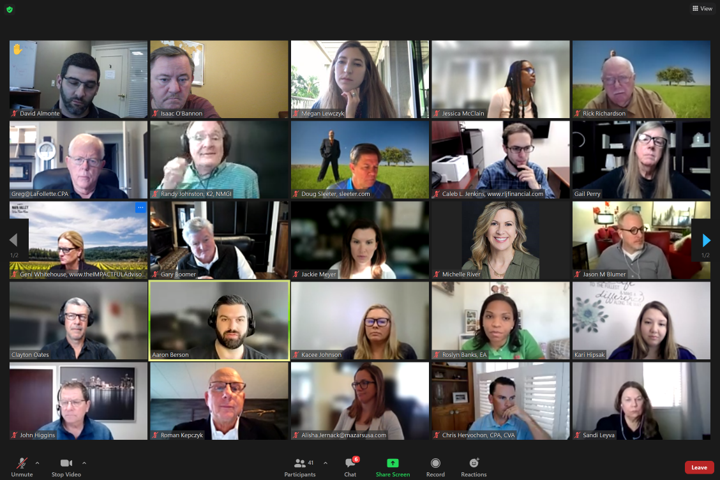Ah, the good old days. Back in the ’70s, tax season meant being in the office by 7:00 a.m., a 12-hour work day, then home to see the family. Add nine hours on Saturday and a few on Sunday afternoon, and it toted up to a respectable 70+ hour work week. And then, along came technology. We didn’t recognize mobile at that time, but the mid ’80s were the beginning. At first, it was a “car phone,” then a “bag phone” and then a Palm Pilot. Finally, 10 years later, we’d found the Holy Grail — remote connectivity! Never mind that it was so slow as to be virtually unusable. I could now go home a few hours earlier, actually talk to my wife, see my kids and have dinner as a family … and THEN “dial-in” to the office to review a few more tax returns. Life was good. Well, at least it wasn’t as bad.
We’ve come a long way since then. And mobile, that whole array of devices and technologies that provide anytime, anywhere access to everything, has revolutionized not only the tax and accounting world, but the worlds of our clients. Before mobile, life was simple: Work really hard at the office and then go home. See, it was simple. The office was for work, and home was for relaxation. But we’ve moved to a new world where there simply is no here nor there, and you can’t ever seem to really leave “work” and go “home.” Until technology blurred all the lines, most communication was asynchronous. Until the telephone was invented in the late 1800s, virtually all business communication, other than direct personal conversation, was paper-based and, by definition, asynchronous. The telephone changed the concept of communication to synchronous. When you were ready to communicate with me, I had better be ready to communicate with you. If not, well … as Paul Newman’s famous Cool Hand Luke put it “What we’ve got here is a failure to communicate.” Now, mobile has placed asynchronous communication back in our hands. Mobile changes not only the here/there paradigm; it also destroys the concept of now/then. Everyone is free (or maybe required, depending on your point of view) to communicate when and where it’s most convenient for THEM.
And therein lies the rub. Just as employees now complain that they “can’t go home,” firm managers complain that their employees “can’t come to work” and be 100% present. It’s technology’s double-edged sword: work/life balance.
It’s surprising to me that many managers today seem so concerned about technology distracting staff during working hours. “We control Facebook on our network, but we can’t control the smartphones,” is a common refrain of partners scratching for an extra percentage point on chargeable time. I constantly get questions about policies and technologies that might solve this perceived problem. But is there really a problem? I submit that there is not! And if there is a problem, it is most decidedly NOT a technology-based one.
Let me explain. I’ll start with the assumption that you’ve hired good, honest, reliable and trustworthy staff. If you can’t agree to that statement, please stop reading now. If you agree, I challenge you to consider how often the typical staff member is “communicated with” by your firm and your clients via email, IM and text message. Now, add the more traditional phone calls, drop-ins, appointments, meetings, etc. How many of these communications are outside of normal working hours? Each and every “out of the office” contact represents personal time that your employees spend on firm business. Each also represents a client or other stakeholder who chose to communicate on THEIR time! I find that most staffers do not see these contacts as intrusions into their personal time, but rather view the enabling technology as freeing them to work when and where it’s most convenient for them to do so. Are you as concerned about your employees working during those times as you are about the few minutes a staffer takes during “work time” to check his Facebook or update her Final Four bracket? Unfortunately, I doubt it.
Back to work/life balance. While there is no bright line here, I have observed that older practitioners seem to be concerned about “work time,” while the younger tend to focus on “personal time.” It seems to hinge on history. If you grew up on those crazy 75-hour tax-season weeks, you’re more likely to think about the “work-time” side of the equation. If you’ve always been smart enough to avoid the insanity of the 14-hour day, you’re more likely to center on the “personal-time” side.
So who’s right? Remember the words of that great Jewish theologian Tevye, who in Fiddler on the Roof listened to one side of an argument and responded, “He is right,” and then, hearing the other side, said, “He’s right.” And then, when told that they couldn’t both be right, noted, “You know, you are also right.”
Thanks for reading CPA Practice Advisor!
Subscribe Already registered? Log In
Need more information? Read the FAQs
Tags: Firm Management, Technology




